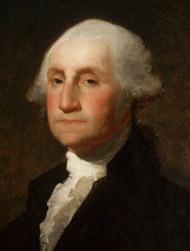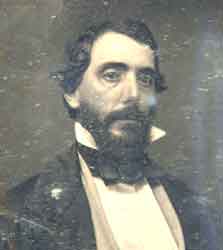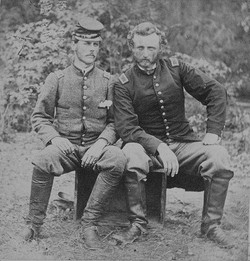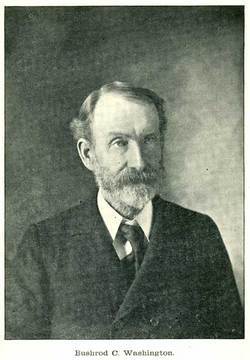About Publications Library Archives
heritagepost.org

Preserving Revolutionary & Civil War History

Preserving Revolutionary & Civil War History


George Washington and last Washington to own “Mount Vernon”. In 1840 he graduated from the University of Virginia. Three years later he married Eleanor Love Seldon. He purchased a farm in Fauquier County, Virginia called “Waveland” where he made his home. His wife died in 1860 from childbirth. When Virginia seceded from the Union John volunteered to defend Virginia in the oncoming conflict. He served as aide-de-camp on the staff of General Robert E. Lee in the campaign of western Virginia. He has commissioned Lieutenant Colonel on this campaign. While reconnoitering in the Cheat Mountains of now West Virginia he was shot by a bushwhacker and killed. In a letter written on September 6th, 1861 to his brother-in-law, Dr. W. Fountain Alexander from the “Camp of Valley Mountain” John expresses his concerns of his own survival. “…I don’t know when I shall leave this region, or indeed whether I ever shall do so, as of course, my chances are the same as those of other men, and I know some of us will never get away…” signed, “Most Affectionately yours, John A. Washington”. He died one week later.

Lieutenant James Barroll Washington, Confederate Officer. This collateral descendent of President George Washington was a native of Baltimore, Maryland. He attended the United States Military Academy. When the War between the states became imminent, he embraced the Southern Confederacy and received a commission that made him a lieutenant in the Provisional Army of Virginia (PAVA). Subsequently, he was appointed to a lieutenancy in the Confederate States Army and assigned to General Joseph Eggleston Johnston to serve as an Aide-de-Camp. It was in this capacity that the unfortunate officer was captured on May 31, 1862, at the Battle of Seven Pines, Virginia. During this captivity, a chanced meeting with George Armstrong Custer, an acquaintance from his West Point days, took place. The two former plebes and then-current adversaries later sat together for a series of images (see left). Washington remained a prisoner-of-war until his exchange on September 21, 1862, at Aiken’s Landing, Virginia, after which, he was assigned as an Ordnance Officer in Montgomery, Alabama. At the close of the war, he became an executive with the Baltimore and Ohio Railroad. He died in Pittsburg, Pennsylvania.
 ymont estate outside Charles Town. He joined the Confederate Army, was captured, exchanged, and later became an officer in the 12th Virginia Cavalry. He survived the war and moved to the state of Washington, where he died and was buried. Nonetheless, the family erected a memorial in the graveyard at Zion church. Bushrod’s brother Sgt. George Washington, who wrote the letter about a prisoner exchange for Dick, was killed in action in 1863. He was also buried at Zion.
ymont estate outside Charles Town. He joined the Confederate Army, was captured, exchanged, and later became an officer in the 12th Virginia Cavalry. He survived the war and moved to the state of Washington, where he died and was buried. Nonetheless, the family erected a memorial in the graveyard at Zion church. Bushrod’s brother Sgt. George Washington, who wrote the letter about a prisoner exchange for Dick, was killed in action in 1863. He was also buried at Zion. Pvt. James Cunnigham Washington Member of Co B, 12th Virginia Cavalry Regiment, Rosser’s Brigade. Army Of Northern Virginia, CSA. Captured along with Herbert Alexander at Claymont Farm near Charles Town. Imprisoned at Fort McHenry near Baltimore, Md. Starved and inhumanely treated by their Yankee captors, died in captivity. After James C. Washington and Herbert Alexander were caught trying to blow up the railroad bridge, a furious Sheridan ordered:
Pvt. James Cunnigham Washington Member of Co B, 12th Virginia Cavalry Regiment, Rosser’s Brigade. Army Of Northern Virginia, CSA. Captured along with Herbert Alexander at Claymont Farm near Charles Town. Imprisoned at Fort McHenry near Baltimore, Md. Starved and inhumanely treated by their Yankee captors, died in captivity. After James C. Washington and Herbert Alexander were caught trying to blow up the railroad bridge, a furious Sheridan ordered: